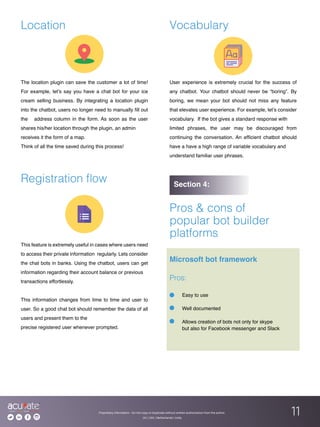The Great Decoupling: Separating Fact From Fiction In Global Supply Chains

Table of Contents
The Drivers of Decoupling: Fact vs. Fiction
Several factors contribute to the ongoing discussion around supply chain decoupling. Let's examine the key drivers, separating substantiated realities from speculative narratives.
Geopolitical Risks: A Tangible Threat
Geopolitical instability significantly fuels the push for decoupling. Trade wars, political sanctions, and armed conflicts dramatically increase the risk of relying on single-source suppliers.
- US-China Trade Tensions: The protracted trade war between the US and China exposed vulnerabilities in heavily interconnected supply chains, prompting many companies to diversify sourcing.
- The War in Ukraine: The conflict highlighted the fragility of global supply chains reliant on specific regions for critical resources, such as energy and raw materials. This event underscored the importance of supply chain diversification and resilience.
- Increased Risk Perception: The cumulative effect of these geopolitical events is a heightened perception of risk associated with heavily concentrated, globalized supply chains. Businesses are increasingly prioritizing resilience over cost optimization.
Pandemic Impacts: A Catalyst for Change
The COVID-19 pandemic acted as a stark wake-up call, exposing the vulnerabilities inherent in highly interconnected global supply chains. Sudden disruptions and shortages of essential goods exposed the weaknesses of just-in-time manufacturing models.
- Supply Chain Disruptions: Lockdowns, port congestion, and transportation bottlenecks caused widespread supply chain disruptions, leading to shortages of critical components and finished goods.
- Shift Towards Resilience: The pandemic forced businesses to re-evaluate their supply chain strategies, prioritizing resilience and diversification over pure cost efficiency.
- Regionalization Efforts: Many companies began exploring nearshoring and reshoring options to reduce their reliance on distant suppliers and mitigate future disruptions.
Technological Advancements: Enabling Localized Production
Technological advancements are also playing a crucial role in enabling localized production and reducing reliance on distant suppliers.
- Additive Manufacturing (3D Printing): 3D printing allows for on-demand production of parts, reducing lead times and dependence on global supply chains.
- Automation in Logistics: Automated warehouses and robotic process automation are streamlining logistics and improving efficiency in regionalized supply chains.
- Cost Implications: While these technologies offer benefits, their initial investment costs can be significant, influencing the feasibility of localized production for smaller businesses.
Sustainability Concerns: A Growing Influence
Growing environmental and social concerns are also driving a shift towards shorter, more regionalized supply chains.
- ESG (Environmental, Social, and Governance) Factors: Investors and consumers are increasingly demanding greater transparency and accountability in supply chains, pushing companies to adopt sustainable practices.
- Carbon Footprint Reduction: Shortening supply chains reduces transportation distances and associated greenhouse gas emissions, making them a more sustainable option.
- Ethical Sourcing: Localized production allows for greater control over ethical sourcing and labor practices, addressing concerns about exploitation and human rights violations in global supply chains.
Strategies for Navigating the Changing Landscape
Businesses must adapt to the changing dynamics of global supply chains. Several strategies are critical for navigating this new landscape.
Nearshoring and Reshoring: Bringing Production Closer to Home
Relocating production closer to home (nearshoring) or back to the home country (reshoring) offers significant benefits but also presents challenges.
- Benefits: Reduced lead times, improved responsiveness to market changes, and greater control over quality and production processes.
- Challenges: Higher labor costs in developed countries, potential infrastructure limitations, and the need for significant investment in new facilities.
- Examples: Many manufacturers are relocating production from Asia to Mexico or other Latin American countries (nearshoring), while others are bringing production back to the US or Europe (reshoring).
Diversification of Suppliers: Mitigating Risk
Building resilient supply chains requires diversifying sourcing across multiple suppliers and geographical locations.
- Risk Mitigation: Diversification minimizes the impact of disruptions affecting a single supplier or region.
- Supplier Relationship Management: Effective supplier relationship management is crucial for ensuring the reliability and quality of multiple suppliers.
- Supplier Evaluation: A robust process for evaluating and selecting alternative suppliers is vital for ensuring supply chain resilience.
Supply Chain Visibility and Technology: Enhancing Transparency
Technology plays a crucial role in improving transparency and tracking goods throughout the supply chain.
- Real-time Data and Analytics: Real-time data provides visibility into inventory levels, production processes, and transportation schedules, allowing for proactive management.
- Blockchain Technology: Blockchain can enhance traceability and transparency throughout the supply chain, improving accountability and reducing fraud.
- Internet of Things (IoT): IoT sensors can track goods in real-time, providing valuable data for optimizing logistics and improving efficiency.
Government Policies and Incentives: Shaping the Landscape
Government policies and incentives are significantly influencing decoupling trends.
- Reshoring Incentives: Many governments are offering incentives to encourage companies to reshore production, including tax breaks and grants.
- Investment in Domestic Manufacturing: Governments are investing in infrastructure and workforce development to support domestic manufacturing.
- Trade Agreements: Trade agreements can either facilitate or hinder decoupling, depending on their terms and conditions.
The Future of Global Supply Chains: Predictions and Implications
The Great Decoupling will continue to reshape global supply chains, leading to significant implications for businesses and consumers.
Regionalization of Production: The Emergence of Hubs
We can expect the rise of regional production hubs, with more localized supply chains forming around specific industries or geographic areas.
- Benefits: Reduced transportation costs, improved responsiveness to local market demands, and greater economic integration within regions.
- Drawbacks: Potential for regional imbalances, increased vulnerability to regional disruptions, and reduced access to specialized suppliers outside the region.
- Examples: We are already seeing the development of regional clusters in Southeast Asia, Eastern Europe, and North America.
Increased Costs and Inflation: A Potential Side Effect
Decoupling is likely to lead to increased costs and potential inflationary pressures.
- Cost of Reshoring: Reshoring can be costly, requiring investments in new facilities, equipment, and workforce training.
- Cost of Diversification: Diversifying suppliers can also add to costs, as managing multiple suppliers requires additional resources.
- Impact on Consumers: Increased costs could lead to higher prices for consumers, potentially impacting affordability and purchasing power.
The Role of International Cooperation: A Necessary Element
International cooperation is crucial for addressing the challenges and opportunities presented by the Great Decoupling.
- Standardization and Regulatory Frameworks: Harmonizing standards and regulations across borders can facilitate trade and investment.
- Facilitating Trade and Investment: International organizations play a vital role in facilitating trade and investment, helping to mitigate the negative impacts of decoupling.
- Addressing Trade Imbalances: International cooperation is needed to address potential trade imbalances and ensure a fair and equitable global trading system.
Conclusion: Making Sense of the Great Decoupling
The Great Decoupling is a multifaceted phenomenon driven by geopolitical risks, pandemic impacts, technological advancements, and sustainability concerns. Understanding the facts and separating them from the fiction is crucial for businesses to effectively navigate this changing landscape. Building resilient, diversified supply chains, whether global or increasingly regionalized, is no longer a strategic advantage but a necessity. To succeed in this evolving environment, companies must actively adapt their strategies, embrace new technologies, and collaborate effectively with governments and international organizations. Learn more about supply chain decoupling strategies and building resilient supply chains to navigate the complexities of the Great Decoupling. Consult with supply chain experts to develop a robust and adaptable strategy for your business.

Featured Posts
-
 Jayson Tatum On Grooming Confidence And A Full Circle Coaching Moment
May 09, 2025
Jayson Tatum On Grooming Confidence And A Full Circle Coaching Moment
May 09, 2025 -
 3 K Babysitting Bill Turns Into A 3 6 K Daycare Bill Financial Planning Advice
May 09, 2025
3 K Babysitting Bill Turns Into A 3 6 K Daycare Bill Financial Planning Advice
May 09, 2025 -
 Palantirs 30 Drop Time To Buy The Dip
May 09, 2025
Palantirs 30 Drop Time To Buy The Dip
May 09, 2025 -
 Jolyon Palmers Advice For Jack Doohan Focusing Amidst Alpines Driver Changes
May 09, 2025
Jolyon Palmers Advice For Jack Doohan Focusing Amidst Alpines Driver Changes
May 09, 2025 -
 Choosing Thailands Next Bot Governor A Crucial Decision For The Economy
May 09, 2025
Choosing Thailands Next Bot Governor A Crucial Decision For The Economy
May 09, 2025
